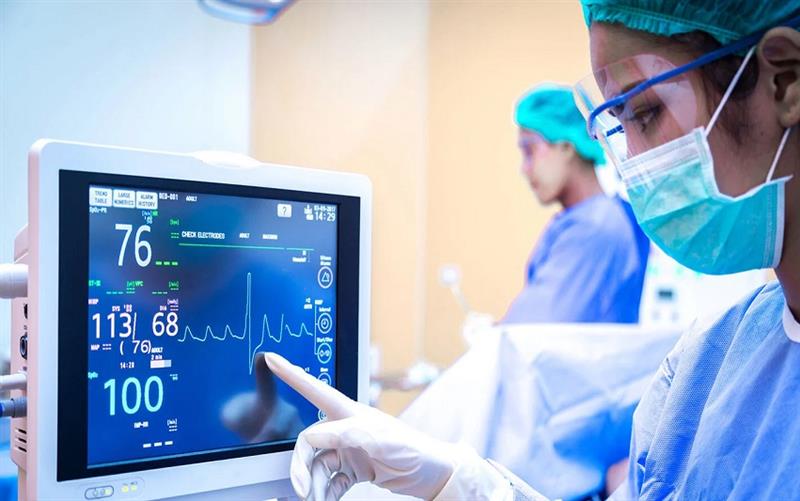
The use of integrated medical software is changing the way daily operations are managed in healthcare practices. Through the automation of administrative duties, improvement of communication, and simplification of workflows, this technology lowers staff workloads, boosts productivity, and ultimately enhances patient care. Investing in integrated software puts practices in a better position to manage the intricacies of contemporary healthcare, improving patient and staff outcomes.
Integrated medical software has become essential as healthcare continues to change, rather than a luxury. Medical practices may guarantee more efficient operations, lower expenses, and improve the overall experience for all parties by utilizing this technology.
Medical offices are constantly looking for ways to increase operational efficiency while upholding high standards of patient care in the fast-paced healthcare climate of today. The usage of integrated medical software is one of the most significant breakthroughs in recent years. This program helps minimize errors, save time, and improve practice management by automating repetitive tasks and optimizing staff workflows. Now let's explore how staff workflows in healthcare environments can be revolutionized by integrated medical software.
1. Improved Appointment Scheduling
Another important area where staff workflows can be optimized is the scheduling and management of patient appointments. Intelligent scheduling solutions included with integrated medical software enable practices to maximize patient time slots, minimize overlaps, and automatically remind patients.
This lessens the possibility of no-shows and frees up employees to manually confirm bookings. Medical practices can increase total patient flow and income by optimizing scheduling and reducing missed appointments.
2. Efficient Billing and Coding
Medical coding and invoicing are frequently intricate procedures requiring close attention to detail. Billing is made easier by integrated software, which tracks payments, generates bills automatically, and sends insurance claims. Additionally, it guarantees that each patient's treatments are coded correctly for medical purposes, lowering the possibility of errors and claim denials.
Automated billing procedures ease the workload for administrative employees, guaranteeing quicker payment response times and lowering the possibility of income leaks.
3. Enhanced Communication Between Departments
Delays in communication between front desk, billing, and clinical staff, for example, can seriously impair workflow. This communication gap is filled by integrated medical software, which gives staff members a single platform to access information and work together effectively.
For instance, while making an appointment, front desk employees can quickly verify the availability of healthcare professionals, and the billing team can quickly retrieve treatment details for precise billing. Since there is less back-and-forth communication, each team is able to concentrate on its tasks thanks to this transparency.
4. Seamless Patient Data Management
Managing patient data is one of the most time-consuming duties in any medical practice. Patient data, including demographics, medical history, test results, and billing data, is centralized using integrated medical software. As a result, there is no longer a need for duplicate data entry, which lowers administrative errors and staff paperwork time.
Healthcare professionals may swiftly retrieve patient information during appointments when all patient data is conveniently available in one location, resulting in more seamless patient interactions and satisfaction.
5. Automated Prescription Management
Although handling prescriptions by hand can take a lot of time, they are a necessary component of medical care. E-prescribing capabilities included in integrated medical software enable medical professionals to promptly submit prescriptions to pharmacies and renew them online.
This lessens staff time spent on phone calls and paperwork and lowers the likelihood of handwriting or medicine dose errors. Faster medicine delivery to patients results in improved health outcomes and higher levels of patient satisfaction.
6. Reduces Staff Burnout
In the healthcare industry, administrative load is a significant factor in staff burnout. Healthcare personnel can experience less stress because to integrated medical software, which streamlines processes, automates tedious operations, and cuts down on time spent on repetitive activities.
As a result, employees are more satisfied with their jobs and have more time to devote to patient care, which benefits the patients they treat as well as the staff.
7. Increased Patient Engagement
Not only is integrated medical software advantageous to the staff, but it also improves patient engagement. Patient portals are available on many platforms, allowing users to consult with healthcare practitioners, seek prescription refills, schedule appointments, and view their medical information.
In addition to saving staff time, this self-service model encourages patients to participate more actively in their healthcare, which enhances patient satisfaction and results.
8. Customizable Workflows for Different Roles
Customizable workflows are a common feature of integrated medical software, enabling staff members to customize the platform to fit their individual roles. For example, administrative workers might prioritize scheduling and billing tools, while nurses can have a dashboard dedicated to patient care chores.
By clearing the clutter and assisting each team member in concentrating on their main duties, this role-based approach increases productivity and lowers the possibility of errors. Instead of asking workers to modify their procedures to accommodate the program, the software adapts to the workflow.
9. Remote Access for Telemedicine and Virtual Collaboration
Integrated software has become essential for healthcare providers providing remote consultations as telemedicine has grown in popularity. Staff members can simply arrange, oversee, and record virtual meetings with the help of this software, making telemedicine workflows as seamless as in-person consultations.
Moreover, remote access to patient data via integrated software facilitates communication and decision-making among team members even when they are not present in person. No matter where they are, everyone stays on the same page thanks to virtual collaboration tools.
10. Streamlined Reporting and Compliance
For medical practitioners, maintaining compliance with healthcare standards and producing accurate reports are equally important. By automating the reporting process, integrated medical software facilitates data collection and analysis for HIPAA, CMS, and other healthcare standards compliance.
Reports can now be generated by administrative staff without having to go through mountains of documentation. Alternatively, they only need a few clicks to generate comprehensive reports that guarantee on-time submissions and compliance with regulations.